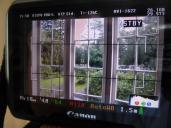
It allows to keep PV going, with more focus towards AI, but keeping be one of the few truly independent places.
-
It depends on if you really want it. May be best to wait for new generation?
-
Good stuff, @markr041 on the footage - very film-like. I've been contemplating on either getting the EOS M (to compliment my GF2), or the Pentax K-01. I might get the former in the body form as I want to try out the manual lens part. So, I take it that it does have some focus peaking -- I guess only in the kit lenses? Just wondering.
-
No focus peaking (though there is focus magnification for all lenses), just very accurate and fine AF where you place your finger on the lcd - this works for ALL Canon lenses with AF, not just the kit lenses. I have even tried out the Tamron 70-300mm AF VR lens, and AF works just as well as the kit lens.
-
Thanks, @markr041 for the info. I certainly got one (in silver) in the body since it was too late to get both the $299 deals or Pentax K-0,1 so I caved and gotten one before they're all gone. Here's a pic of the model with a Minolta MD 50mm 1.8 lens a friend of mine gave me. I'm liking the fact that I can have manual custom settings for video - even with low light. May I ask, what do you think of the video in low light?

 EOS_M_MinoltaMD_tu1.jpg1077 x 735 - 464K
EOS_M_MinoltaMD_tu1.jpg1077 x 735 - 464K -
I'm quite late to the party, here's a vid I did with EOS-M. I'm liking it so far. Shot with the Minolta MD lens.
-
The EOS M provides video capture functionality that you cannot find on most EOS models. Since there is no mirror, the camera is able to provide continuous autofocus during video capture. This feature has also recently become available on the newer Rebel models as well. While in video capture mode, the camera is still capable of capturing still images, so it helps with the need to constantly change the shooting modes. Unfortunately this does not work the other way around. We were not able to get the camera to record video while the camera was in its still shooting modes, even with the dedicated video recording button. Our sample videos came out very well; with the only major problem being that it was difficult to get the camera to focus on fast moving objects.
The Canon EOS M is a fantastic introduction to the ILC market for Canon. They have produced a powerful compact camera with fantastic image quality. It is a little short on some of the features that can be found on some other ILCs, and with only two lenses for the EF-M mount, the selection of smaller lenses to use without an adapter is incredibly limited. We were also a bit disappointed with camera's AF system being much slower than we expected.
http://www.steves-digicams.com/camera-reviews/canon/eos-m/canon-eos-m-review.html
-
There's a lot to like about the Canon EOS M. Unfortunately, there was even more to dislike about it during my first shooting experiences with it. In fact, before the firmware update last month, the EOS M had a flaw so large that I couldn't in good conscience recommend it to anyone, as it was. Its autofocus speed was utterly abysmal -- truly, worryingly slow. For comparison's sake, I own a Canon SX200 point-and-shoot from 2009, and this 3-year-old point-and-shoot focused faster and more accurately than the EOS M.
And not only was the Canon EOS M sluggish to focus in bright light, but also it was an absolute mess when faced with dark shooting conditions. Low-light AF was glacial, seesawing back and forth as it struggled to find focus, and frequently downright failing to lock on anything at all. And when I shot with multiple-point autofocus on, the camera was slower still.
Late to the mirrorless camera game, the Canon EOS M wasn't a big hit at launch -- primarily due to reports of its glacial autofocus speeds. (Something we discovered here at IR immediately.) Due to what was considered a fatal flaw, the camera was mostly ignored until recently when Canon finally addressed the AF issue with a much-anticipated firmware update. We're happy to report that this update did in fact markedly improve the EOS M's speed, shaving an average of a half a second off its single-shot autofocusing times. While it's still not as fast as many other compact system cameras, it brought the Canon EOS M back to the acceptable range -- and back to life in the minds of photographers.
http://www.imaging-resource.com/PRODS/canon-eos-m/canon-eos-mA.HTM
-
EOS-M with Canon EF-S 18-135mm STM IS lens:
Some focus pulls.
-
Magic Lantern now works on the EOS-M with the new firmware.
I have installed it. So far I have upped the bitrate in AVC mode to over 64 Mbps (regular is around 40 Mbps). I have also shot some RAW clips of about 3-4 seconds, at 37 megabytes (not bits) per second, getting 250 MB files. I have also tested the log file capability, which creates a csv file for each clip giving the real time aperture, shutter, ISO, focus distance, WB, and other parameters.
Right how to load ML (after putting the appropriate files on your sd card), you update the firmware in the camera menu. You need to do that each time you turn on the camera (for now), so the default is the standard Canon features and no ML.
-
Magic lantern does more than allow RAW video and higher bitrates, but gives you lots of live exposure and focus aids (e.g., focus peaking and a live magnified window for the focus point, zebras) and live HDMI out. Here is a shot of the EOS M screen with ML, where I have deliberately over-exposed to show the zebras:
You see the live histogram and all the live info in movie mode, including focus distance (1.5 meters).

 rsz_2p1010294.jpg1224 x 918 - 1M
rsz_2p1010294.jpg1224 x 918 - 1M -
My first EOS M RAW video using the new ML (2.02 firmware)
This is one sequence shot in RAW mode with the EOS M. Then, the single RAW file (one take) was split into its 800 frames as 800 sequentially numbered .DNG files. The .DNG files were read into Adobe Lightroom, where white balance was set (I chose the daylight setting). I also lowered ev by one third and then all 800 files were outputted as .Tif files. The set of 800 Tiff files (really frames) were read into Sony Vegas Pro and then rendered out as an MP4 file with a bitrate of 40Mbps at 29.970. The original frame rate was 29.970, shot at 720p in 2:35 aspect ratio (720x544) - and that is what you see. The sequence bitrate in the camera was about 35 megabytes per second and continuous shooting (I could have shot until the file size limit). The original RAW file was almost 1 Gigabyte for this 25-second sequence shot in extremely bright sun. Seems the dynamic range is much better than that in the .MOV files the camera creates as this was shot in really bright, contrast sun.
-
EOS M Dim Light Video: Grand Central Terminal
The EOS M's advantage is that it can shine in dim light, and Grand Central Terminal is really dim, but has lots going on.
Used the 22mm kit lens wide open, shot 108030P AVC at 1/60th shutter.
You see: the commuters, cup cake preparation, the Market, window shopping, ticket ordering, the Apple Store, breakdancing:
And camera stability aids (sometimes those aids were not perfect) were used...
No sound, as I forgot to turn the audio back on after my experiments with Magic Lantern. This is not a RAW video.
-
Here's a timelapse I did with ML on the EOS M. Graded and Ungraded.
-
Around midtown Manhattan with the OES M: Bryant Park, Rockefeller Center, inside St. Patrick's Cathedral for a mass, and a raucous and loud Dominican Day Parade:
You also see a carousel, game-playing, ping pong.
Outdoors with the 18-55mm zoom and .8 ND filter; inside the cathedral with the 22m M lens. 108030p, 1/60th shutter.
-
EOS M RAW video in full 1280 x 720 (720p) at 24fps:
Crop mode used. 35 Mbps to shoot RAW; at this resolution and frame rate each clip can be a few minutes before the buffer runs out.
-
EOS M Dim Light and Nighttime Video:
From dark movie-theater corridors, to underground eateries, down in the subway, and night trains, to stores outside late at night. with the Canon EF 35mm f2.0 IS lens, at 1/60th shutter. Manual audio.
-
EOS M video from a visit to Washington Square Park, NYC.
The fountain, birds feeding, plastic man, flowers and bees, art, slow chess and speed chess, strollers, a guitar strummer, a squirrel eating a French fry, and the piano man, playing live (internal mics, manual audio). Canon EF-S 18-135mm IS STM lens.
-
the M just got duel ISO via ML I think, not much more info on how well it works yet.
-
EOS M video from a visit to NYC's new elevated park, formed from an old elevated freight rail line - The High Line.
Flora and photographers, loungers and construction workers, bugs and insects, strollers and sculptures, and artists at work. From 23rd Street to Gansevoort Street in Manhattan.
Canon EOS M with EF-S 18-135mm IS STM lens. 108030p, at 1/60th shutter in manual mo
Howdy, Stranger!
It looks like you're new here. If you want to get involved, click one of these buttons!
Categories
- Topics List23,993
- Blog5,725
- General and News1,354
- Hacks and Patches1,153
- ↳ Top Settings33
- ↳ Beginners256
- ↳ Archives402
- ↳ Hacks News and Development56
- Cameras2,368
- ↳ Panasonic995
- ↳ Canon118
- ↳ Sony156
- ↳ Nikon96
- ↳ Pentax and Samsung70
- ↳ Olympus and Fujifilm102
- ↳ Compacts and Camcorders300
- ↳ Smartphones for video97
- ↳ Pro Video Cameras191
- ↳ BlackMagic and other raw cameras116
- Skill1,960
- ↳ Business and distribution66
- ↳ Preparation, scripts and legal38
- ↳ Art149
- ↳ Import, Convert, Exporting291
- ↳ Editors191
- ↳ Effects and stunts115
- ↳ Color grading197
- ↳ Sound and Music280
- ↳ Lighting96
- ↳ Software and storage tips266
- Gear5,420
- ↳ Filters, Adapters, Matte boxes344
- ↳ Lenses1,582
- ↳ Follow focus and gears93
- ↳ Sound499
- ↳ Lighting gear314
- ↳ Camera movement230
- ↳ Gimbals and copters302
- ↳ Rigs and related stuff273
- ↳ Power solutions83
- ↳ Monitors and viewfinders340
- ↳ Tripods and fluid heads139
- ↳ Storage286
- ↳ Computers and studio gear560
- ↳ VR and 3D248
- Showcase1,859
- Marketplace2,834
- Offtopic1,320







